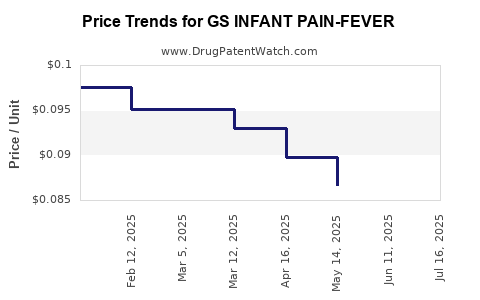Drug Price Trends for GS INFANT PAIN-FEVER
✉ Email this page to a colleague

Average Pharmacy Cost for GS INFANT PAIN-FEVER
| Drug Name | NDC | Price/Unit ($) | Unit | Date |
|---|---|---|---|---|
| GS INFANT PAIN-FEVER 160 MG/5 | 00113-0161-10 | 0.10032 | ML | 2024-11-20 |
| GS INFANT PAIN-FEVER 160 MG/5 | 00113-0590-10 | 0.10032 | ML | 2024-11-20 |
| GS INFANT PAIN-FEVER 160 MG/5 | 00113-0946-10 | 0.10032 | ML | 2024-11-20 |
| GS INFANT PAIN-FEVER 160 MG/5 | 00113-0161-10 | 0.10040 | ML | 2024-10-23 |
| >Drug Name | >NDC | >Price/Unit ($) | >Unit | >Date |


